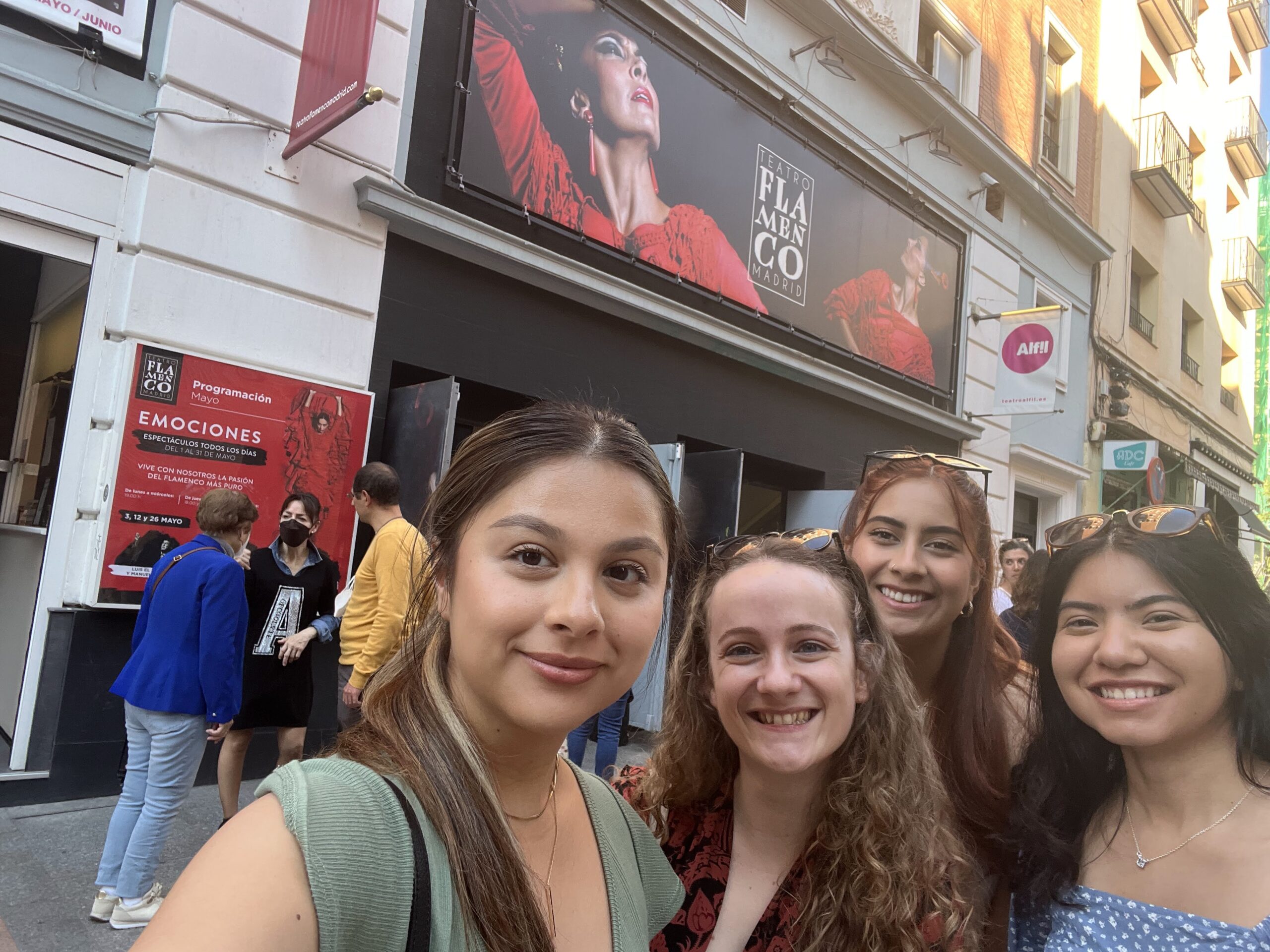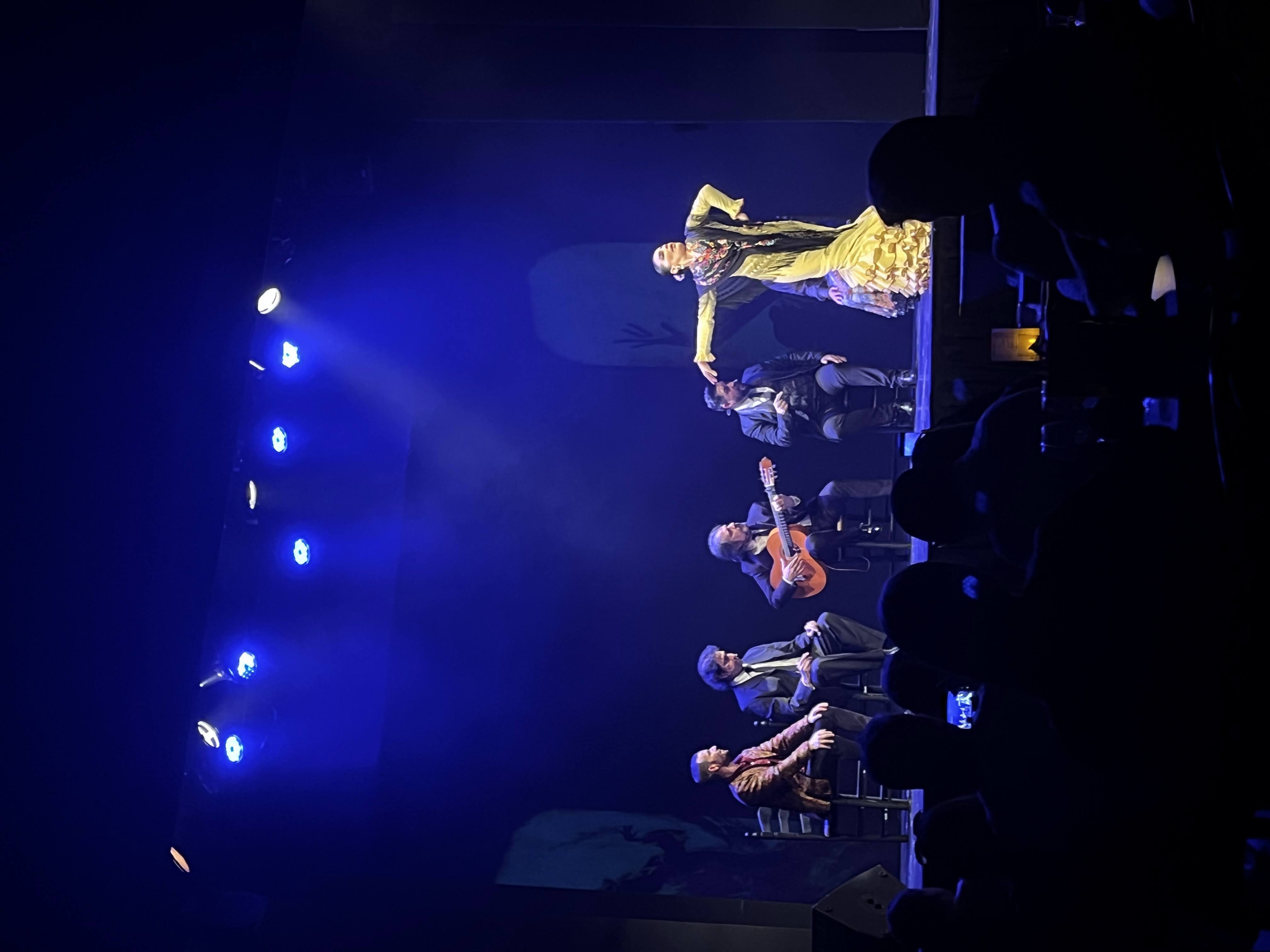
Flamenco – linking the past and the present
Spain is big on its history and traditions, and experiencing the richness and diversity of this culture has been a meaningful part of my time abroad. I already touched upon this topic recounting my Toledo trip, and have recently had the opportunity to add to this by going to a Flamenco show at Teatro Flamenco Madrid, located in the historical neighborhood of Malasana.
Before the start of the show, the performers explained that Flamenco is a traditional Spanish folklore show, made up of Toque (guitar), Cante (Andalucian singing) and Baile (dancing), originating from the Andalucia region at the end of the 1800th century. Though it comes from Southern Spain almost three centuries ago, it has become a great part of the Spanish culture all over the country and is still very much part of current traditions and festivities. The show lasted for an hour, and was an amazing combination of colors, movements, dances and music. The six performers, namely the guitar player, two singers and three dancers (two women and a man), spent the hour performing and divided their show in five parts. The first one was a group dance, followed by a singing performance, and finally solos from the three dancers. Flamenco dancing looks like a very difficult art: dancing around the stage, jumping around, turning with the long dresses, and tapping with the Flamenco shoes in rhythm with the guitarist and the singers. It looks both energizing and exhausting, but that is exactly what makes it so special to the audience, because you need all your senses to be alert if you want to catch all of what is happening on stage.
There were two things I liked best about this show. The first one was the solo from the male dancer. He gave a strong performance, danced for a good ten minutes, and I was particularly impressed with his stamina. Male flamenco is very physical, with sharp movements, lots of tap dancing and jumping, as well as emotive facial expressions. Especially because this show was onstage, all movements and expressions were exaggerated which, combined with the singing, participated in transmitting strong emotions and deep feelings to the audience. My second favorite part was the splendide costumes. Women wear extravagant layered cascading skirts, colorful shawls and heels, while men wear black pants, a white shirt and a vest. Overall, all costumes are made to accentuate the rhythm of the guitar, drive the audience’s eye towards the complex footwork, and colors remain in the color palette of black and red.
This show was probably one of my last experiences of traditional Spain, and made for a good roundup of my experience here. It is both part of Spain’s past and present, appreciated by Spainiards and tourists alike, and says a lot about Spanish culture and history.

